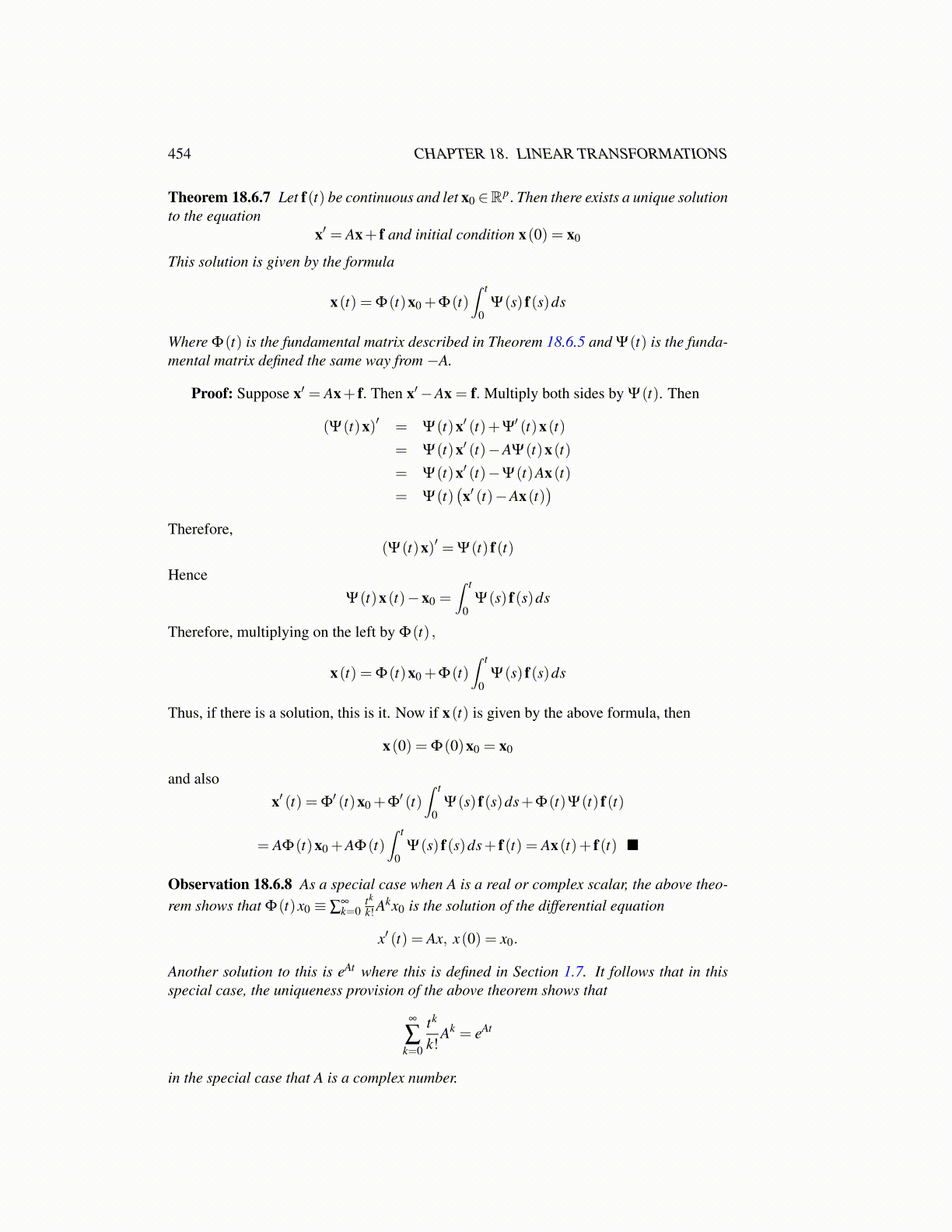
454 CHAPTER 18. LINEAR TRANSFORMATIONS
Theorem 18.6.7 Let f(t) be continuous and let x0 ∈Rp. Then there exists a unique solutionto the equation
x′ = Ax+ f and initial condition x(0) = x0
This solution is given by the formula
x(t) = Φ(t)x0 +Φ(t)∫ t
0Ψ(s) f(s)ds
Where Φ(t) is the fundamental matrix described in Theorem 18.6.5 and Ψ(t) is the funda-mental matrix defined the same way from −A.
Proof: Suppose x′ = Ax+ f. Then x′−Ax = f. Multiply both sides by Ψ(t). Then
(Ψ(t)x)′ = Ψ(t)x′ (t)+Ψ′ (t)x(t)
= Ψ(t)x′ (t)−AΨ(t)x(t)= Ψ(t)x′ (t)−Ψ(t)Ax(t)= Ψ(t)
(x′ (t)−Ax(t)
)Therefore,
(Ψ(t)x)′ = Ψ(t) f(t)
HenceΨ(t)x(t)−x0 =
∫ t
0Ψ(s) f(s)ds
Therefore, multiplying on the left by Φ(t) ,
x(t) = Φ(t)x0 +Φ(t)∫ t
0Ψ(s) f(s)ds
Thus, if there is a solution, this is it. Now if x(t) is given by the above formula, then
x(0) = Φ(0)x0 = x0
and alsox′ (t) = Φ
′ (t)x0 +Φ′ (t)
∫ t
0Ψ(s) f(s)ds+Φ(t)Ψ(t) f(t)
= AΦ(t)x0 +AΦ(t)∫ t
0Ψ(s) f(s)ds+ f(t) = Ax(t)+ f(t) ■
Observation 18.6.8 As a special case when A is a real or complex scalar, the above theo-rem shows that Φ(t)x0 ≡ ∑
∞k=0
tk
k! Akx0 is the solution of the differential equation
x′ (t) = Ax, x(0) = x0.
Another solution to this is eAt where this is defined in Section 1.7. It follows that in thisspecial case, the uniqueness provision of the above theorem shows that
∞
∑k=0
tk
k!Ak = eAt
in the special case that A is a complex number.